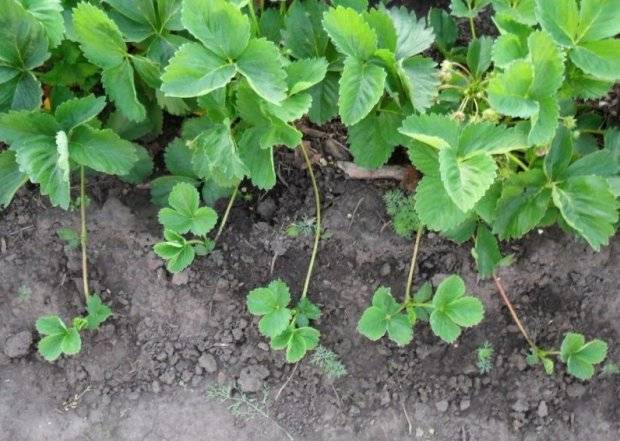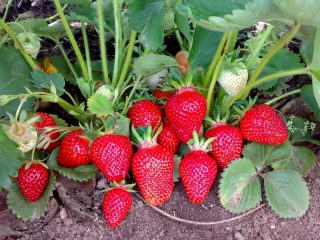Content
The Dutch Vima brand of strawberries combines four varieties: Zanta, Ksima, Rina and Tarda. These are not relatives. The exception is Tarda, since the Zanta variety was used for crossing. Wim Tarda's late-ripening strawberries are characterized by abundant fruiting and resistance to bad weather conditions.
Main characteristics of the variety
A description of the Wima Tarda strawberry variety, photos and reviews from gardeners will help you get to know each other better, but first let’s look at the characteristics. Dutch breeders are trying to develop crops that have high yields and large fruits. Two well-known varieties were used for crossing: Zanta and Vikoda. The result was a large-fruited Tarda with an average fruit weight of 40 g.
Ripe berries acquire a rich red color with a dark tint. Yellowness appears at the tip of the fruit. The skin is bright and shiny. The shape of the berry resembles a truncated cone. Vima Tarda tastes sweet with a strong predominance of strawberry aroma. Berries can be transported. The yield from 1 hectare reaches 10 tons.
Like all representatives of the Vima series, Tarda strawberries form large bushes with strongly overgrown stems and dense green foliage. It throws out a lot of inflorescences.The stems of the peduncles are strong. Most of the ripe berries are held in weight, without bending to the ground. The weak growth of the whiskers makes it easier to care for strawberry plantings.
When considering the description of the Wima Tarda strawberry variety, it is worth paying attention to immunity. The culture is winter-resistant and also tolerates dry summers. Timely preventative spraying against pests will prevent crop loss in the future.
To get a better acquaintance with the variety, let’s look at the quality indicators in Wim Tarde’s description of strawberries:
- large Tarda bushes with strong stems throw out many flower stalks;
- the yield of berries from one bush ranges from 0.8 to 1 kg of berries;
- the fruits grow large in the shape of a truncated cone;
- the minimum berry weight is 30 g, the average is 45 g, with good feeding, fruits weighing up to 50 g grow;
- the appearance of small berries at the end of fruiting is not noticeable;
- the Vima Tarda variety is able to overwinter without shelter, but there is no point in speculating on this advantage;
- the harvested crop can be transported;
- Tarda strawberries are slightly susceptible to fungal and viral diseases;
- Fruiting lasts the entire season until the onset of cold weather.
The purpose of the fruit is universal. Strawberries of the Tarda variety are delicious fresh. The berries are used to make baby puree, jam, and can be frozen. Strawberries are used to make compotes and are also used to decorate cakes and other confectionery products.
The video provides an overview of the Tarda variety:
Agricultural technology of culture
An overview of the description of the strawberry variety by Wim Tarda, the photo provokes avid gardeners to certainly grow the crop on their site. Before doing this, you need to familiarize yourself with the conditions of agricultural technology.
Features of choosing good seedlings
The Dutch variety Wima Tarda will bring a good harvest if quality seedlings are planted. When purchasing planting material, pay attention to the following nuances:
- the appearance of the seedling should be fresh without the presence of withered leaves;
- a healthy plant has at least three brightly colored leaves without spots on the rosette;
- the diameter of the root collar is at least 6 mm;
- there is no rot, dryness or other damage on the root system and heart;
- The root length of a healthy seedling should be more than 7 cm.
If the sold seedlings meet all the parameters, they will grow into good strawberries.
Strawberry seedlings are often sold in peat cups. When purchasing, do not hesitate to check the roots. If you lightly pull the bush with your hand, the plant will come out of the cup along with a lump of earth. Conscientious sellers will not mind such verification.
Preparing for landing
After acquiring Wim Tard, the seedlings are prepared for planting. Gardeners more often practice replanting strawberries in the fall. If it is spring, then all flower stalks are removed from the seedlings. They will pull nutrients from the plant, preventing it from taking root. In the future, removing the first flower stalks will affect the increase in yield.
It is unknown in what conditions the purchased strawberry seedlings were grown. Before planting, it is advisable to harden the seedlings by placing them in the shade during the day in fresh air.At night, the strawberries are brought back into the room.
Choose a place to plant seedlings on the south side of the site. The terrain should be flat and receive maximum sunlight. In the shade under the trees, the berries will grow sour and rot. Swampy areas are immediately excluded. There will be no chance for strawberries to survive in such conditions.
Nutritional value of soil and fertilizing
The Vima Tarda variety takes root well on light soil with moderate moisture. Gardeners get the best results when growing strawberries on sandy, fertilized soils that contain at least 3% humus. Vima Tarda grows poorly in poor and alkaline soils.
The culture loves moderate moisture, but does not tolerate the presence of groundwater. The arrangement of layers should not be higher than 1 m, otherwise the root system will rot. When choosing a site, preference is given to the place where peas, parsley or mustard used to grow.
The bed is prepared a month before planting the seedlings. The soil on the site is dug up simultaneously with the application of complex fertilizing:
- 8 kg of humus;
- up to 100 g of superphosphate;
- nitrogen-containing fertilizer – 50 g;
- potassium salt – 60 g.
Dosage is calculated for 1 m2. The fertilizer is dug to the depth of the spade bayonet. Before planting, the soil is disinfected. The solution is prepared from 10 liters of water with the addition of 40 ml of 10% ammonia and 1 liter of laundry soap solution.
During fruiting, strawberries are fertilized every 3 weeks with a solution of bird droppings. With the appearance of the first buds and after harvesting, mineral fertilizers are applied.
Watering
When the berries begin to set, the plant likes plenty of watering.However, Vima Tarda does not respond well to sprinkling. It is optimal to organize drip irrigation in the strawberry bed. If this is not possible, cover the ground under the bushes with a thick layer of mulch. The blanket will retain moisture in the garden bed, which will eliminate the need for frequent sprinkling watering.
Temperature
A special feature of the Vima Tarda strawberry variety is its resistance to heat. In summer there will be no problems with plantings. The variety is similarly resistant to frost, but there is a minimum limit of –22OC. In the southern regions, bushes are not covered. You can ignore the procedure in cold regions, provided that the winter is snowy. However, no one can control precipitation and it is better to cover the plantings. Before the first frost, strawberries are covered with fresh hay, spruce branches or pine needles. If agrofibre is used for covering, then arcs are pulled over the bed so that the material does not touch the leaves.
Reproduction methods and planting rules
The Vima Tarda variety is propagated in two ways:
- Replacement of the socket. The method is simple, but seriously injures the plant. The rosette is separated from the mother bush, trying to preserve as much as possible a bunch of roots along with a lump of earth. The new seedling is immediately planted in the prepared hole with applied fertilizer. The rosette stands sluggish for about three days, but after acclimatization it begins to grow.
- A less aggressive way is dividing with a mustache. The cut cuttings are placed in cups of water, where potassium or phosphorus fertilizer is dissolved. After the roots appear, the seedlings are planted in cups with loose soil. After five days of abundant watering, the cuttings will take root.The seedling is kept in a glass for another 10 days and can be planted in the garden. A full-fledged bush will grow in 45 days.
There is a third method of propagation - by seeds, but gardeners are not interested in it.
In the spring, Vima Tarda seedlings in the middle zone begin to be planted from mid-April to early May. For the southern regions, the dates are shifted to mid-March. Autumn planting lasts from late July to early September. Gardeners are more inclined to plant in August. Before the onset of frost, the strawberries will have time to take root, and in the spring there will be the first harvest. Autumn planting is not suitable for cold, windy regions. The seedlings take root poorly. If you plant strawberries in the spring, you will have to wait longer for the harvest, but the result will be better.
When planting strawberry seedlings, they adhere to a 35x45 cm pattern. It is undesirable to place them denser due to the branching of the bushes. At a maximum, if there is a shortage of space, the distance is reduced by 5 cm. For each Tarda seedling, dig a hole 10 cm deep. The soil is moistened with water, and equal proportions of manure, ash and compost are added. The root system of the seedling is immersed in liquid mud - mash, placed at the bottom of the hole and covered with soil.
Lightly compact the earth around the bush with your hands, perform another watering and cover it with a 3 cm layer of peat or other mulch.
The video shows the autumn planting of strawberry seedlings:
Reviews
Many gardeners have positive reviews of the Wima Tarda strawberry variety, and we will now see this using several examples.
















